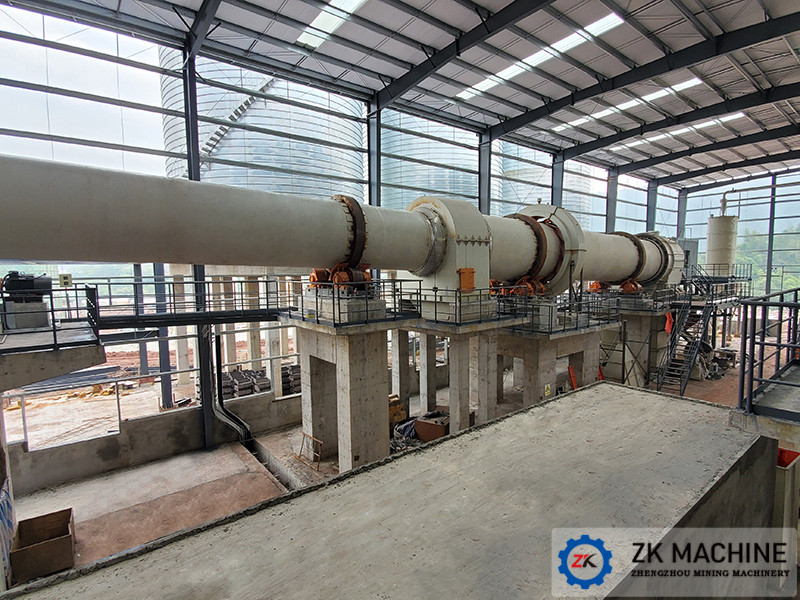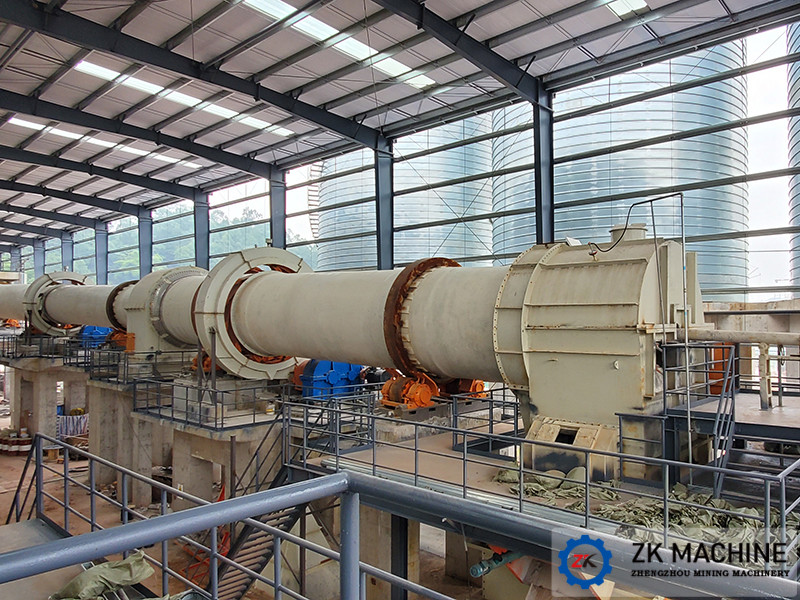Sludge is a by-product produced in the process of urban water treatment. It has the characteristics of high water content, low strength, and often contains harmful components such as pathogens, heavy metals, and toxic, harmful and refractory organics. If it is not properly treated, it is very easy to cause secondary damage. Secondary pollution. Traditional sludge disposal mostly uses sludge landfill, land use, sludge composting, sludge incineration, and ocean dumping. These methods have certain drawbacks. Among them, ocean dumping has been strictly prohibited, and landfilling of sludge takes up a lot of It is difficult to control land resources and exhaust gas from sludge incineration.
Therefore, research on new sludge treatment and disposal technologies to realize the utilization of sludge resources has attracted more and more attention. Ceramsite has the advantages of high strength, low density, sound insulation and noise reduction, difficult heat conduction, shrinkage resistance, rough and porous surface, and large specific surface area. It has broad application prospects in construction materials, water treatment, sound-absorbing materials, and garden substrates. . According to different raw materials, ceramsite can be divided into clay ceramsite, shale ceramsite and fly ash ceramsite. Among them, clay and shale are non-renewable resources, and the state has issued relevant policies to prohibit or restrict mining.

The chemical composition of the sludge is similar to that of the raw materials for the preparation of ceramsite, so researchers consider using dehydrated sludge to replace non-renewable resources such as clay and shale to produce ceramsite. Compared with industrial sludge, water supply sludge and domestic sewage sludge have a large output and relatively simple composition, and have become a key research object for the preparation of ceramsite from domestic and foreign sludge resources. According to the preparation process, ceramsite can be divided into sintered ceramsite, sintered ceramsite and non-fired ceramsite. The sintered ceramsite has low density, rich internal pores, and wide application fields, so there is more research attention. Combining with the characteristics and composition analysis of sludge, this article describes the feasibility of using sludge to prepare ceramsite, and summarizes the research status of using sludge to prepare ceramsite at home and abroad, focusing on the three aspects of sludge content, raw material ratio and roasting system. The influencing factors of the process of preparing lightweight ceramsite from sludge are analyzed, and the application of sludge ceramsite in construction materials and water treatment is summarized, in order to provide a reference for the research and development of preparing ceramsite from sludge resource.
Studies have shown that the preparation of swelling ceramsite must meet two basic conditions: ①The raw material contains enough gas-producing components (such as illite, hematite, pyrite, dolomite, etc.); ②It produces enough gas under high temperature conditions. More glassy phase, thereby enveloping the generated gas. The main components of the raw materials for firing ceramsite are generally SiO2, Al2O3, and Al2O3. Mineral components such as mullite are generated under high temperature conditions. They are the main source of ceramsite strength. Alkaline oxides Fe2O3, RO (CaO, MgO), R2O (K2O, Na2O), etc. are the melting ingredients. According to Riley’s research, when the chemical composition of the raw material is located in the swelling zone in the three-phase diagram (Figure 1), it can be used as the raw material for sintering ceramsite. The suitable range for producing swelling ceramsite is SiO2 48%-65%. Al2O3 14%-20%, the sum of Fe2O3, RO, R2O and other fluxes is 13%-26%, and m(SiO2+Al2O3)/m(Fe2O3+RO+R2O) is 3.5-10. Table 1 lists the chemical composition of ceramsite raw materials such as sludge from water supply plants, sludge from domestic sewage plants, clay, and shale. The main components of sludge are similar to clay and shale, mainly SiO2 and Al2O3, and it is possible to prepare lightweight ceramsites from resources.

The addition of too much aluminum flocculant in the water supply plant sludge leads to relatively low SiO2 content and high Al2O3 content, which will cause the strength of the ceramsite to decrease, and the sintering temperature will increase, resulting in a decline in the quality of ceramsite products and waste of energy. Sewage plant sludge also has the problem of low SiO2 content, and its loss on ignition is quite large (LOI> 40%), shrinks significantly during the calcination process, no high temperature liquid phase appears, and usually does not have the conditions for direct firing of ceramsite . Therefore, the researchers adopted the method of adding auxiliary materials containing silicon, aluminum and other auxiliary materials to make ceramsites by recycling sludge. The main chemical components of commonly used additives such as fly ash and montmorillonite are shown in Table 1. After adding silicon and aluminum auxiliary materials, it can basically meet the raw material requirements for firing ceramsite. Sludge is used as an auxiliary admixture. To promote the expansion of ceramsite.
Research and development history of ceramsite preparation technology from sludge
The research on using sludge to burn ceramsite in China can be roughly divided into two major stages: one is from the early 20th century to the early stage of the "Eleventh Five-Year Plan", the basic theoretical research led by universities, research institutes, etc. covers sludge The expansion mechanism of firing ceramsite, the ratio of raw materials, the roasting mechanism, product performance testing, and the solidification performance of heavy metals have basically formed the basic theoretical system for firing ceramsite from sludge; The production technology research represented by the key technology research and application demonstration research of light shale ceramsite production. This stage mainly focuses on the pretreatment technology, deodorization technology, raw material ratio technology, firing in the preparation of sludge ceramsite The core technologies and equipment such as technology and flue gas treatment technology have been systematically studied and demonstrated. After years of research and practice, the basic theoretical system for preparing lightweight ceramsites from sludge resources has been basically formed, and a certain number of sludge ceramsite demonstration production lines have been built.
.jpg)
In general, there are still many problems to be studied in the preparation of ceramsite from sludge resource utilization: at the basic theoretical level, such as sludge pretreatment technology based on increasing the amount of sludge, the distribution ratio of each component in sludge and auxiliary materials to the performance of ceramsite The influence mechanism of ceramsite baking process based on different functional requirements, the relationship between flux and ceramsite expansion, and the solidification mechanism of sludge heavy metals need to be studied in depth; at the actual production level, such as raw material pretreatment and homogenization, refinement The development of key technologies such as automated batching, flue gas treatment, and energy-saving production and its supporting production equipment will strengthen the technical control of the production process.
Henan ZK Corp has the ability to design sludge ceramsite production technology, equipment processing and manufacturing capabilities, equipment installation and commissioning personnel training capabilities. Friends from all walks of life are welcome to visit the factory and exchange technology.





















.jpg)
